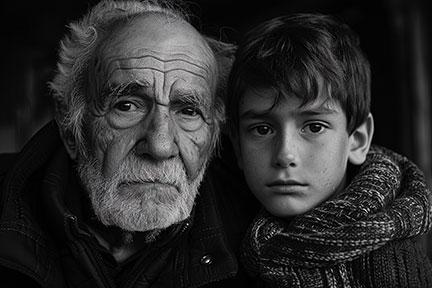
Every stage of life comes with its own risks, but those risks are especially acute when individuals are placed in institutional care. Whether it’s a troubled teen entering a juvenile facility or an aging parent moving into a long-term care home, the common thread is vulnerability. Families often trust that these environments are equipped to provide safety, stability, and support. Yet repeated cases of institutional abuse—across age groups—reveal that this trust can be dangerously misplaced.
Juvenile Facility Abuse: What It Reveals About Institutional Oversight
Legal investigations and media reports have increasingly brought attention to the disturbing conditions inside some juvenile detention centers. In states like Michigan, for example, reports of systemic abuse in youth facilities reveal how institutional neglect can persist even under government oversight. Public concern over these incidents has grown in response to widespread allegations, with cases like the Michigan youth detention sexual abuse lawsuit offering insight into the broader legal implications of such abuse—whether or not formal lawsuits have been filed.
These are not isolated incidents, nor are they new. Patterns of neglect, violence, and cover-ups have been well documented for decades. Cases across the country continue to reveal how oversight mechanisms have failed, time and again, to prevent harm. As one report shows, institutional abuse isn’t new—and unless there’s meaningful accountability, the same mistakes keep repeating in different forms, including in senior care environments.
Parallels in Senior Care Facilities
Much like youth in detention, older adults in long-term care settings often face similar threats—neglect, physical abuse, emotional manipulation, or financial exploitation. The difference is that these risks often go unnoticed or unreported due to cognitive decline, fear of retaliation, or social isolation. Facilities with inadequate staffing or poorly enforced safety protocols can quickly become unsafe, despite appearing clean and reputable on the surface.
The underlying systemic issues—undertrained staff, underfunded operations, lack of oversight—echo those seen in youth detention scandals. This parallel isn't just troubling; it’s a call for families to be proactive in both selecting and continuously monitoring care environments.
Warning Signs Families Should Never Ignore
Whether you're evaluating a youth facility or a senior care home, the signs of abuse or neglect tend to share common features:
- Unexplained bruises, cuts, or injuries
- Behavioral changes like withdrawal or sudden aggression
- Fearful reactions to staff or caregivers
- Unsanitary living conditions
- Missing personal belongings or unexplained financial transactions
Families should also be wary of inconsistent communication from staff, sudden changes in medication, or limited access to their loved ones. These red flags require immediate follow-up and, in many cases, legal consultation.
Legal Advocacy as a Line of Defense
For families navigating eldercare decisions, knowing when and how to get legal help can make a major difference. Lawyers who focus on elder abuse are often the first line of defense when something goes wrong, helping families respond quickly and protect their loved ones' rights. Access to protecting elder rights is more than just a legal option—it’s part of a broader strategy to ensure dignity, safety, and justice in care environments.
Legal advocacy is not only reactive. Proactive legal guidance can also include reviewing care contracts, helping families understand resident rights, and reporting suspected abuse to the proper authorities. In this way, lawyers can serve as both a deterrent and a shield.
Preventive Measures: Choosing Safe, Compassionate Care
Institutional abuse often thrives in environments where families aren’t paying close attention. Preventive measures begin long before a loved one enters a facility. Here’s what families can do:
- Visit the facility multiple times, at different times of day
- Ask detailed questions about staff-to-resident ratios and staff training
- Review state inspection reports and incident histories
- Talk to current residents or their families
- Monitor for subtle changes after placement
These steps can dramatically reduce the likelihood of abuse—but they don’t eliminate it. Ongoing involvement and vigilance remain critical.
Final Thoughts
Abuse in care facilities—whether aimed at teenagers or seniors—underscores a painful reality: institutions don’t always protect the people they’re meant to serve. But families aren’t powerless. With the right knowledge, tools, and support systems, they can act decisively to prevent harm, respond effectively when issues arise, and advocate for the safety and dignity of their loved ones.
